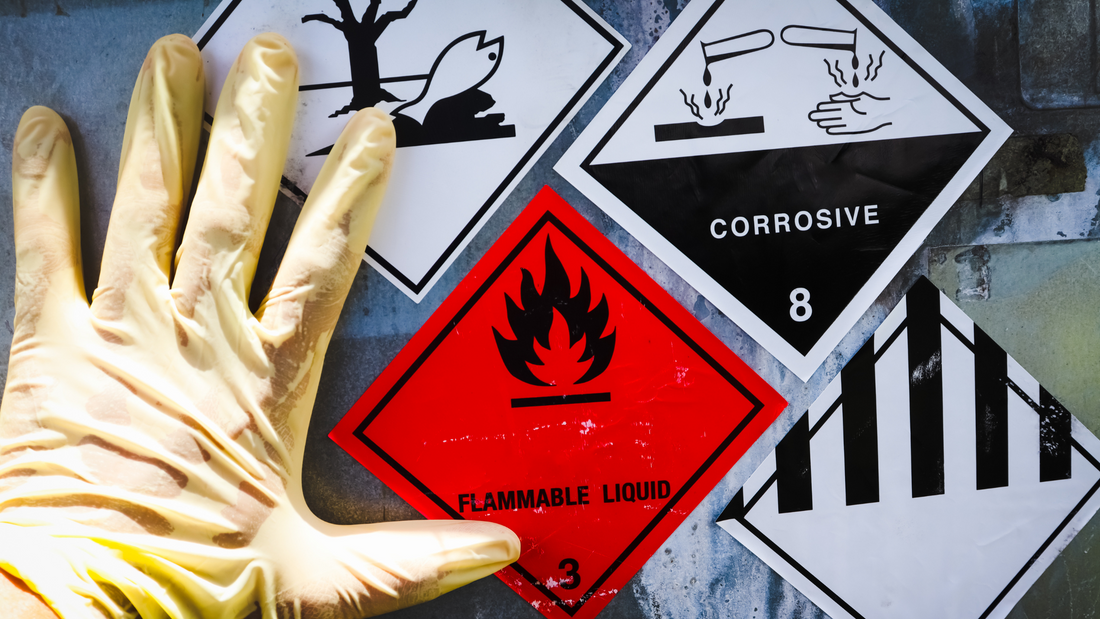
Is your company prepared to comply with the Safety Data Sheet?
Share
The publication of ABNT NBR 14725:2023 represents the most comprehensive and significant update to Brazil's chemical safety standards since the initial adoption of the Globally Harmonized System (GHS).
The new standard introduces a paradigm shift by consolidating a previously fragmented regulatory framework into a single, cohesive document. This strategic move directly reflects Brazil's commitment to aligning its chemical hazard communication practices with the 7th edition of the United Nations' GHS "Purple Book".
The new version was published on July 3, 2023 and includes a 24-month transition period, and came into effect on July 3, 2025.
The core changes mandated by this new standard are multifaceted, impacting every aspect of the chemical supply chain.
In a simplified way, the main changes include:
1. Consolidated Framework - A primary and foundational change introduced by the 2023 standard is its consolidation. The new version officially cancels and replaces the four previous parts, unifying all guidelines for hazard classification, safety data sheets, and labeling into one single, comprehensive document. This transformation is not a minor revision but a complete restructuring of the standard. The new document is extensive, comprising 7 sections and 17 annexes, and totaling 542 pages, making it the most significant update since 2009.
2. The Evolution of the Safety Data Sheet - One of the most immediate and visible changes in the new standard is the formal change in nomenclature from FISPQ (Ficha de Informação de Segurança de Produtos Químicos) to FDS (Ficha de Dados de Segurança). This is not a mere cosmetic alteration; it is a deliberate and meaningful move to align with the internationally recognized term "Safety Data Sheet" (SDS). This change facilitates global communication and standardizes documentation for companies involved in international trade, reducing the burden of adapting terminology for different markets. The new FDS name, emphasizes a move towards a more technical and objective format, focusing on verifiable "data" rather than general "information". The FDS has also been updated with more detailed content and a revised format.
3. New Criteria for Hazard Classification and Communication - The ABNT NBR 14725:2023 expands the scope of chemical hazard classification by introducing two new classes of danger, directly aligning the national standard with the GHS 7th edition. This expansion demonstrates a maturing and more nuanced approach to chemical risk assessment. The new classes are:
- Desensitized Explosives - This class addresses chemical substances and mixtures that, while having explosive properties, have been rendered less sensitive to external stimuli through the addition of other components. The introduction of this category demonstrates a move beyond a simple "explosive" classification, allowing for tailored safety protocols that account for the nuanced nature of the product's physical hazard.
- Products Dangerous to the Ozone Layer - The inclusion of this class is a crucial and forward-looking addition that expands the standard's purview beyond immediate health and safety concerns to include broader, long-term environmental impacts. It indicates that Brazil's regulatory framework is embracing a modern, holistic perspective on chemical impact, acknowledging global environmental responsibilities and promoting a more comprehensive approach to risk management.
4. New Rules for Chemical Labeling - The updated standard introduces several critical changes to chemical labeling, all of which are designed to enhance clarity and ensure international uniformity.
- One of the most significant and immediately noticeable changes is the elimination of the warning word "Cuidado" (Caution). The standard now exclusively permits the use of "Perigo" (Danger) for high-severity risks and "Atenção" (Warning) for lesser-severity risks, aligning with the GHS's two-tiered severity scale. This change simplifies the hierarchy of risk and removes ambiguity for the end-user, allowing for a more immediate and impactful understanding of a product's potential hazards.
- Additionally, the hazard (H) and precautionary (P) phrases have been revised for greater precision and alignment with international standards. This requires a meticulous review of product classifications to ensure the correct phrases are used. The standard also mandates the inclusion of the chemical identity of certain hazardous ingredients on the label. This is particularly important for substances that contribute to health hazards such as carcinogenicity, reproductive toxicity, or respiratory sensitization, though some flexibility is permitted for certain classes, allowing for the inclusion of only the ingredient with the highest severity.
- To address practical challenges, the standard provides specific rules for small containers and non-hazardous products. For packaging with a volume of 250 mL or less, a reduced label format is permitted, which must still include the product identification and supplier contact information. Other mandatory elements, such as pictograms and H and P phrases, can be provided via supplementary means, like fold-out labels or leaflets. Furthermore, even products not classified as hazardous must now carry a label with minimum information, including a standardized phrase confirming their non-hazardous classification, which standardizes communication across all chemical products.
Additionally, Brazilian legislation, through Regulatory Standard 26 (NR 26), of the Ministry of Labor and Social Security, aims to establish measures regarding safety signage and identification to be adopted in the workplace. It establishes that "chemical products used in the workplace must be classified according to their hazards to the safety and health of workers, in accordance with the criteria established by the GHS."
In addition to classification, "the manufacturer or, in the case of imports, the supplier in the domestic market must prepare and make available a chemical product safety data sheet for every chemical product classified as hazardous." "The aspects related to the safety data sheet must comply with the provisions of the official technical standard." This "official technical standard" is ABNT NBR 14725, which means that there is a legal requirement to comply with this standard.
This content is brought to you by our partner Chemical Risk - https://www.chemicalrisk.com.br/
